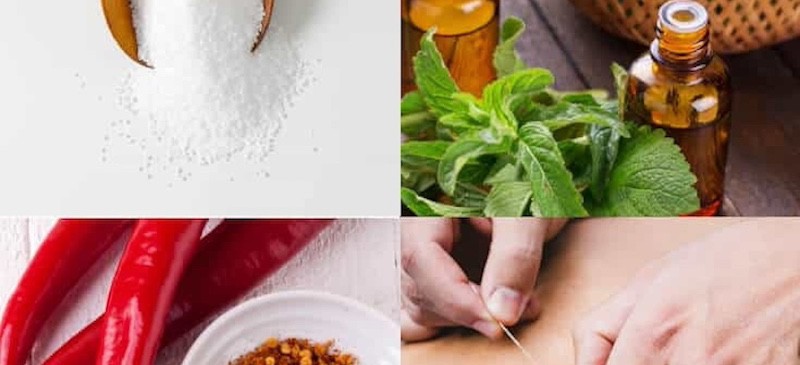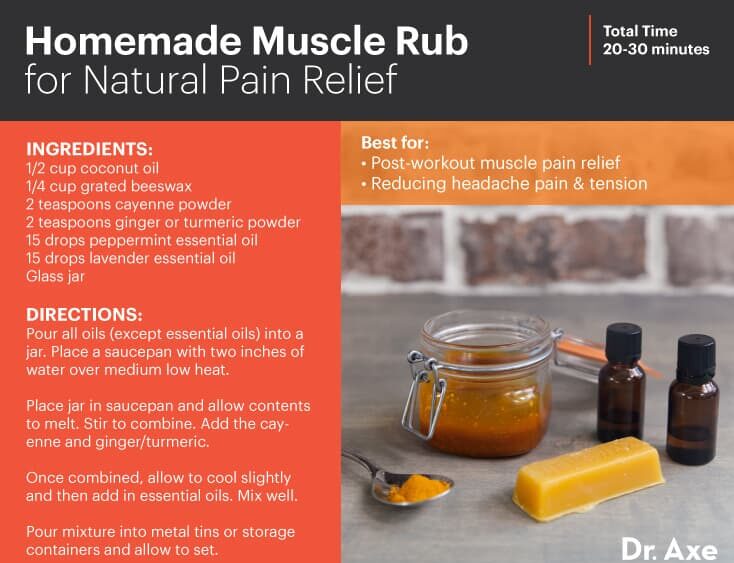This Dr. Axe content is medically reviewed or fact checked to ensure factually accurate information.
With strict editorial sourcing guidelines, we only link to academic research institutions, reputable media sites and, when research is available, medically peer-reviewed studies. Note that the numbers in parentheses (1, 2, etc.) are clickable links to these studies.
The information in our articles is NOT intended to replace a one-on-one relationship with a qualified health care professional and is not intended as medical advice.
This article is based on scientific evidence, written by experts and fact checked by our trained editorial staff. Note that the numbers in parentheses (1, 2, etc.) are clickable links to medically peer-reviewed studies.
Our team includes licensed nutritionists and dietitians, certified health education specialists, as well as certified strength and conditioning specialists, personal trainers and corrective exercise specialists. Our team aims to be not only thorough with its research, but also objective and unbiased.
The information in our articles is NOT intended to replace a one-on-one relationship with a qualified health care professional and is not intended as medical advice.
8+ ‘You Won’t Believe It’ Natural Painkillers
March 26, 2024

Painkilling drugs can do wonders for patients that need them, but they also can be extremely addictive and potentially lead to serious side effects. Even acetaminophen, the main ingredient in Tylenol, affects us in ways we’re only now starting to fully understand — it makes people less empathetic — which makes it more important than ever to turn to safer, scientifically proven natural painkillers when we feel discomfort or are dealing with chronic pain.
Luckily, there are plenty of natural painkillers to choose from. Let’s take a look.
8 Natural Painkillers
1. Painfully Spicy Foods
If you’ve got a taste for hot stuff, you likely know some level of pain is involved. Interestingly, though, hot foods like wasabi and cayenne pepper can actually act as natural painkillers.
Cayenne pepper benefits include several types of natural pain relief. The powerful pepper actually helps alleviate post-operative pain, including pain relief after a mastectomy or amputation.
Cayenne pepper is also a potent candida killer. Scientists found it’s active against 16 different fungal strains, including candida, a common internal infection linked to joint pain, among other candida symptoms.
Cayenne also provides external pain relieve. Capsaicin, an important natural painkiller found in cayenne, helps treat muscle soreness, tension and even skin infections. Look for it in natural painkilling creams.
Wasabi is another spicy food with natural painkilling properties. Scientists are studying the isothiocyanates in wasabi as potential pain relievers. Researchers from University of California San Francisco made a discovery suggesting that isothiocyanates could block an inflammation receptor, making it a potentially important natural painkiller.
2. Powerful Pain-Relieving Oils
Evening Primrose Oil for Menstrual Pain
Evening primrose oil is naturally rich in the essential fatty acid gamma-linolenic acid and is becoming more popular around the world as a natural PMS treatment. Many women take it to alleviate common premenstrual symptoms, including pain, thanks to its hormone-balancing effects.
Take 1,500 milligrams starting on the first day of your period and continuing until ovulation. If your’e on certain antidepressants, you have a bleeding or a seizure disorder, you’re on phenothiazine drugs for schizophrenia, or you’re being treated for high blood pressure, you should talk to your doctor before starting evening primrose oil.
Arnica Oil for Bruises and Carpal Tunnel Pain
Not as popular as many other essential oils, arnica oil belongs in every medicine cabinet. Considered generally safe for topical use, arnica oil used on the skin helps ease inflammatory pain associated with insect bites, bruises and even arthritis flare-ups.
To treat bruises, applying arnica oil twice daily (as long as the skin is not broken) may help reduce bruising inflammation even better than low-concentration vitamin K formulations.
When it comes to carpal tunnel relief, arnica oils is also a smart choice in the natural painkillers department. For some, it helps reduce pain to the point of not needing carpal tunnel surgery. For others, arnica oil is a proven way to help lower inflammation and associated pain in the weeks following carpal tunnel surgery.
Lavender and Peppermint Oils for Muscle Pain and Headache Relief
One of the benefits of peppermint oil involves its natural painkiller and muscle-relaxant properties. It’s even been shown to help alleviate fibromyalgia and myofascial pain syndrome.
For natural headache relief, two essential oils team up for natural pain relief. Peppermint oil improves circulation, and lavender reduces muscle tension — two ways to quickly stop a headache in its tracks.
Try placing a few drops of peppermint or lavender oil into your hands and then rubbing the blend on your forehead, temples and back of neck. You can also dilute a few drops down by mixing the essential oils with almond, grapeseed or coconut oil.
The peppermint-lavender combo also teams up to reduce post-workout muscle pain. This handy homemade muscle rub recipe also helps alleviate sore muscles:

Note: Certain essential oils possess incredible pain-reducing qualities. (As always, it’s important to use essential oils according to directions because these plant-based compounds are potent, so be sure to mix with carrier oils accordingly when appropriate.)
3. Epsom Salt
You may already know that magnesium-rich Epsom salt is a natural painkiller for bone and joint pain and muscle soreness. (It’s a go-to remedy for heel spur pain, specifically.) Epsom salt can also come in handy when you’re dealing with a painful splinter or even post-childbirth soreness.
Soaking an area affected with a splinter in warm water and epsom salt helps painlessly draw out splinters. A sitz bath including Epsom salt can help increase magnesium and quell inflammation associated with soreness after childbirth.
4. Self Myofascial Release
Foam roller exercises are a form of self myofascial release that, while kind of mildly painful at times, actually get out those nagging muscle knots while helping you fix muscle imbalances that lead to poor posture and related musculoskeletal pain. It’s also an emerging treatment to reduce your risk of developing delayed muscle onset soreness, a common exercise-related pain that keeps people out of the gym.
5. Drink Your Great-Grandma’s Go-To Broth
Back in the “olden days,” our ancestors didn’t like to waste any part of an animal they were using for food. Because of that, back then, bone broth was a normal part of almost everyone’s diet. Made of bones, marrow, skin, feet, tendons and ligaments, this old-fashioned stock helped provide an ample dose of collagen, proline, glycine and glutamine that is largely missing from the modern American diet.
Bone broths contain minerals in forms that your body can easily absorb: calcium, magnesium, phosphorus, silicon, sulphur and others. They contain chondroitin sulfate and glucosamine, the compounds sold as pricey supplements to reduce inflammation, arthritis and joint pain. You can try this Chicken Bone Broth Recipe or Beef Bone Broth Recipe.
One of the reasons bone broth serves as such a potent natural painkiller involves the ability to act as a soft cushion to help bones glide without friction due to its gelatin content. Think of it as a joint anti-ager.
6. Graston Technique
Digging a metal tool into a painful spot, such as the bottom of your foot if you’re dealing with plantar fasciitis, sounds like some sort of medieval torture practice. The Graston technique is an instrument-aided manual therapy that serves as a noninvasive way to deal with soft tissue ailments like achilles tendonitis, carpal tunnel syndrome, fibromyalgia, shin splints, back and shoulder pain, and other ailments.
It’s even been proven to help relieve pain associated with chronic conditions like trigger finger and post-surgery pain in a way that can reduce the amount of painkillers administered.
The technique works by targeting scar tissues, alerting the body’s immune system that it’s an area that needs to be targeted and healed.
7. Needles
When you think of a needle poking into your skin, the last thing you probably think about is natural pain relief. The truth is, though, that dry needling works by stimulating trigger points to reduce pain or disability.
A 2007 study found dry needling significantly reduced shoulder pain by targeting a trigger point. Dry needling can also help deal with trigger points that reduce a person’s range of motion, which can lead to serious pain and musculoskeletal side effects.
Acupuncture is another needle therapy that is known as a natural painkiller. It’s been found to help relieve chronic pain in many studies.
8. Rolfing
Could you find pain relief through a method that focuses on soft tissue manipulation and your psyche? The answer is yes.
Rolfing, also known as structural integration, involves soft tissue work and movement education to realign your body’s myofascial structure with gravity. (Think of your body’s fascia as the “netting” that encases your muscles and organs.)
Rolfing not only relieves physical muscle pain rooted in your fascia, but also improves your emotional well-being and energy. Whether you’re an athlete looking to improve your game or someone suffering with TMJ pain, chronic back pain or spine pain, rolfing is something worth exploring. It’s a potent natural painkiller that impacts your neuromuscular system in a positive, pill-free way.
Other potential natural painkillers include:
- white willow bark
- chiropractic adjustments
- tai chi
- gua sha
- massage therapy
- yoga
- turmeric
- frankincense oil/boswellia
- holy basil
- chili peppers
- wintergreen oil
- ginger oil
- rosemary oil
- helichrysum
- hyaluronic acid
- omega-3
- proteolytic enzymes (bromelain, papain)
- active release technique
- Feldenkrais technique
- pilates
- gyrotonic
- deep tissue massage
- PRP treatment
- stem cell therapy
- acupressure
- infrared sauna
- hydrotherapy
- cryotherapy
- vitamin D
- progressive muscle relaxation
- and more
The Dangers of Prescription Painkillers
There’s no doubt that prescription painkillers help reduce your pain. The problem is you often need more and more to quell pain associated with chronic symptoms. Worse yet, overdoses and addiction are becoming even more prevalent, meaning natural painkillers are more important than ever.

The three most common prescription painkillers involve oxycodone, hydrocodone and methadone. Try seeking natural painkillers before opting for these potentially addictive and harmful solutions. The controversial botanical substance kratom is also sometimes used to fight opioid addiction and help with pain relief.
Final Thoughts
Prescription and over-the-counter painkillers help relieve pain but come with a whole bunch of side effects. Aspirin side effects include stomach ulcers and breathing problems, while prescription painkillers are blamed for an increasing amount of overdose deaths.
Natural painkillers that focus on breaking up muscle adhesions and trigger points, along with posture improvements and pain-fighting essential oils, can go a long way in helping you feel better without resorting to addictive and damaging over-the-counter and prescription pills.
